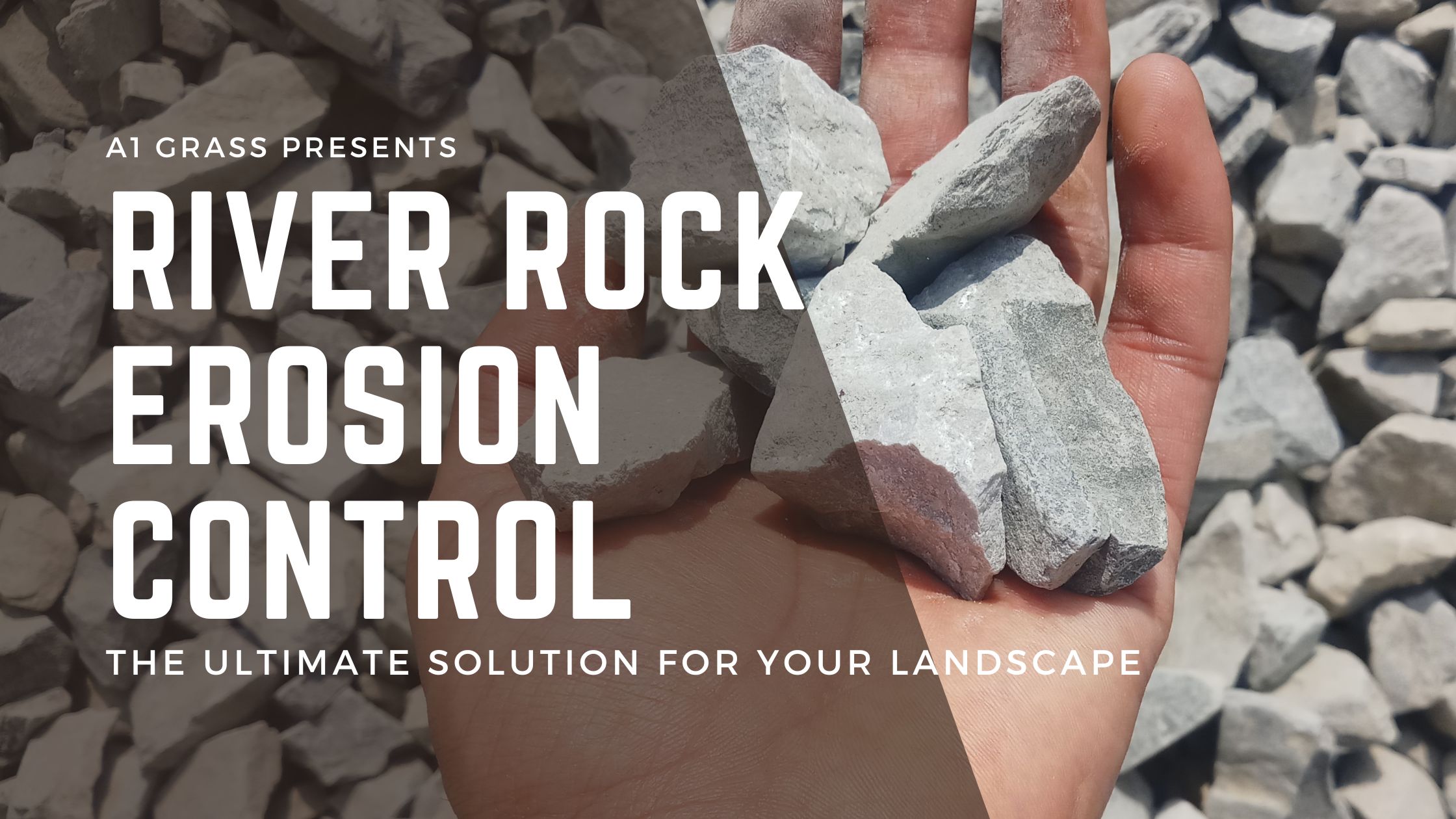River rock for erosion control is a method of utilizing river rocks to mitigate soil erosion in your landscape. It offers a practical and aesthetically pleasing solution to stabilize slopes, prevent erosion, and enhance the visual appeal of your outdoor space. This article delves into the various types of river rock, their advantages in erosion control, considerations for their use, and guidance on installation and maintenance.

Types of River Rock for Erosion Control
There are different types of river rock that can be used for erosion control. The most popular types are granite river rock, limestone river rock, and river rock blend. Granite river rock is a hard and durable rock that can withstand harsh climatic conditions. Limestone river rock is softer than granite and has a smoother surface. River rock blend consists of different types of river rocks that are blended together to create a unique look.
Advantages of Using River Rock for Erosion Control
Using river rock for erosion control has a lot of advantages. One of the most significant advantages is that it is aesthetically pleasing. River rocks come in different shapes, sizes, and colors, which add visual interest to your landscape. Additionally, river rocks are durable and long-lasting, making them an excellent investment for your landscape. Finally, river rocks are environmentally friendly and do not pose any harm to the environment.
Factors to Consider when Using River Rock for Erosion Control
When using river rock for erosion control, there are some factors that you need to consider. One of the most important factors is the size and weight of the rock. The size and weight of the rock will determine how well it will hold up against the forces of nature. The slope of the area is also an important factor to consider. If the slope is too steep, the rocks may not hold up well. Finally, the climate and weather conditions in your area will also play a role in determining the effectiveness of river rock for erosion control.
How to Install River Rock for Erosion Control
Installing river rock for erosion control is a simple process. First, you need to prepare the area by removing any debris and leveling the ground. Next, you need to lay a geotextile fabric to prevent the rocks from sinking into the soil. Finally, you can place the river rocks on top of the geotextile fabric. It’s important to ensure that the rocks are tightly packed together to prevent them from shifting.
Maintenance of River Rock for Erosion Control
To ensure that your river rock erosion control system remains effective, you need to maintain it regularly. This involves inspecting the rocks for displacement, cleaning any debris that may have accumulated, and preventing overgrowth and weeds from taking root. Additionally, you may need to replace any rocks that have been displaced or damaged.
Conclusion
River rock erosion control is an excellent way to prevent soil erosion, stabilize slopes, and add visual interest to your landscape. Using river rocks for erosion control has a lot of advantages, including their durability, aesthetic appeal, and environmental friendliness. If you’re considering using river rocks for erosion control, make sure to consider the factors we’ve discussed and follow the proper installation and maintenance procedures.
Looking for more landscaping tips and ideas? Check out A1 Grass, your one-stop-shop for premium grass and landscape supplies. We’re here to provide premium grass and landscape supplies to landscapers, homeowners, and DIY’ers who want to turn normal landscapes into beautiful dreamscapes.
FAQs
- Can river rock be used in areas with heavy rainfall?
Yes, river rock can be used in areas with heavy rainfall. However, you need to ensure that the rocks are tightly packed together to prevent them from shifting. - How long does river rock last for erosion control?
River rock can last for many years if it is installed correctly and maintained regularly. - Can river rock be used for slope stabilization?
Yes, river rock can be used for slope stabilization. However, you need to ensure that the slope is not too steep and that the rocks are tightly packed together. - Is river rock expensive for erosion control?
The cost of river rock for erosion control depends on the size of the area you’re covering and the type of river rock you’re using. However, it is generally an affordable option compared to other erosion control methods. - Can I install river rock for erosion control myself?
Yes, you can install river rock for erosion control yourself. However, it’s important to follow the correct installation procedures to ensure that the rocks are effective in preventing soil erosion.
Other Helpful Articles
- Bermuda Grass for High-Traffic Areas: Top Resilient Landscaping Solution for 2024
- ZeroScape Landscaping Designs: Crafting a Drought-Tolerant Garden
- Mastering Hardscape Installation in the Dallas-Fort Worth Area: Tips for Success
- Choosing the Perfect Hardscape Materials: A Guide to Enhancing Your Outdoor Space
- 5 Affordable Hardscape DIY ideas: Transform Your Outdoor Space without Breaking the Bank



